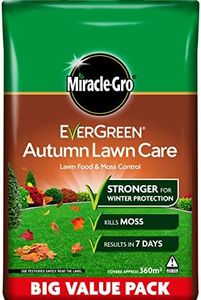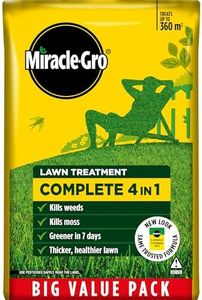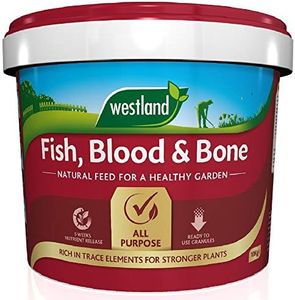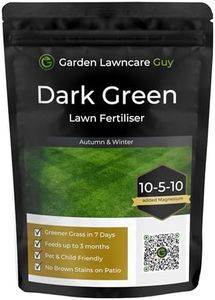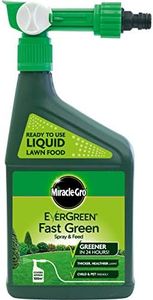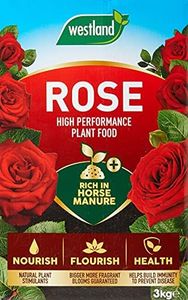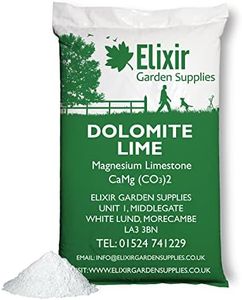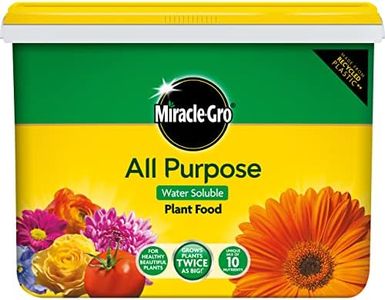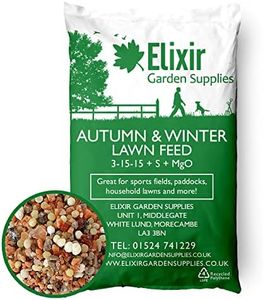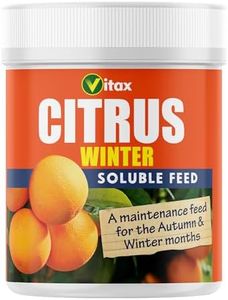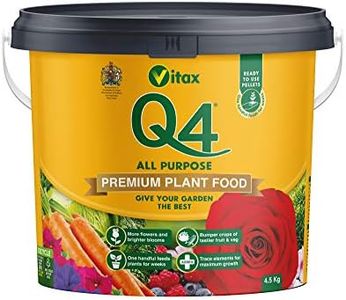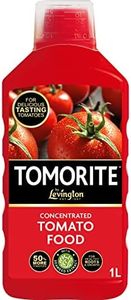We Use CookiesWe use cookies to enhance the security, performance,
functionality and for analytical and promotional activities. By continuing to browse this site you
are agreeing to our privacy policy
10 Best Garden Fertilizers
From leading brands and best sellers available on the web.Buying Guide for the Best Garden Fertilizers
Choosing the right garden fertilizer is crucial for the health and growth of your plants. Fertilizers provide essential nutrients that plants need to thrive, and selecting the right type can make a significant difference in your garden's productivity. When picking a fertilizer, consider the specific needs of your plants, the condition of your soil, and the environmental impact of the product. Understanding the key specifications of fertilizers will help you make an informed decision that aligns with your gardening goals.NPK RatioThe NPK ratio represents the percentage of nitrogen (N), phosphorus (P), and potassium (K) in the fertilizer. These are the primary nutrients that plants need for growth. Nitrogen promotes leaf growth, phosphorus supports root and flower development, and potassium aids in overall plant health. Fertilizers are often labeled with three numbers, such as 10-10-10, indicating the NPK ratio. If your plants need more leafy growth, choose a fertilizer with a higher nitrogen content. For flowering plants, a higher phosphorus ratio is beneficial. Consider your plant's specific needs and the current condition of your soil when selecting the NPK ratio.
Type of FertilizerFertilizers come in various types, including granular, liquid, and slow-release. Granular fertilizers are solid and can be spread over the soil, providing nutrients over time. Liquid fertilizers are mixed with water and applied directly to the plants, offering quick nutrient absorption. Slow-release fertilizers gradually release nutrients over an extended period, reducing the need for frequent applications. Choose granular fertilizers for ease of use and long-term feeding, liquid fertilizers for immediate nutrient needs, and slow-release options for low-maintenance gardening.
Organic vs. SyntheticOrganic fertilizers are made from natural sources like compost, manure, or bone meal, while synthetic fertilizers are chemically manufactured. Organic fertilizers improve soil structure and promote beneficial microbial activity, but they may release nutrients more slowly. Synthetic fertilizers provide immediate nutrient availability and precise nutrient ratios but can sometimes lead to soil degradation over time. If you prefer environmentally friendly options and have time for gradual nutrient release, organic fertilizers are ideal. For quick results and specific nutrient needs, synthetic fertilizers might be more suitable.
MicronutrientsIn addition to the primary nutrients, fertilizers may contain micronutrients like calcium, magnesium, and iron, which are essential for plant health in smaller quantities. Micronutrients support various plant functions, including photosynthesis and enzyme activity. If your soil is deficient in certain micronutrients, or if your plants show signs of nutrient deficiency, such as yellowing leaves, choose a fertilizer that includes these additional elements. Assess your soil's nutrient profile and your plants' health to determine if micronutrients are necessary.
Application MethodThe application method refers to how the fertilizer is applied to the garden. Common methods include broadcasting, side-dressing, foliar feeding, and fertigation. Broadcasting involves spreading the fertilizer evenly over the soil surface, while side-dressing places it near the plant roots. Foliar feeding applies liquid fertilizer directly to the leaves, and fertigation involves mixing fertilizer with irrigation water. Choose broadcasting for general soil enrichment, side-dressing for targeted feeding, foliar feeding for quick nutrient uptake, and fertigation for efficient watering and feeding.
